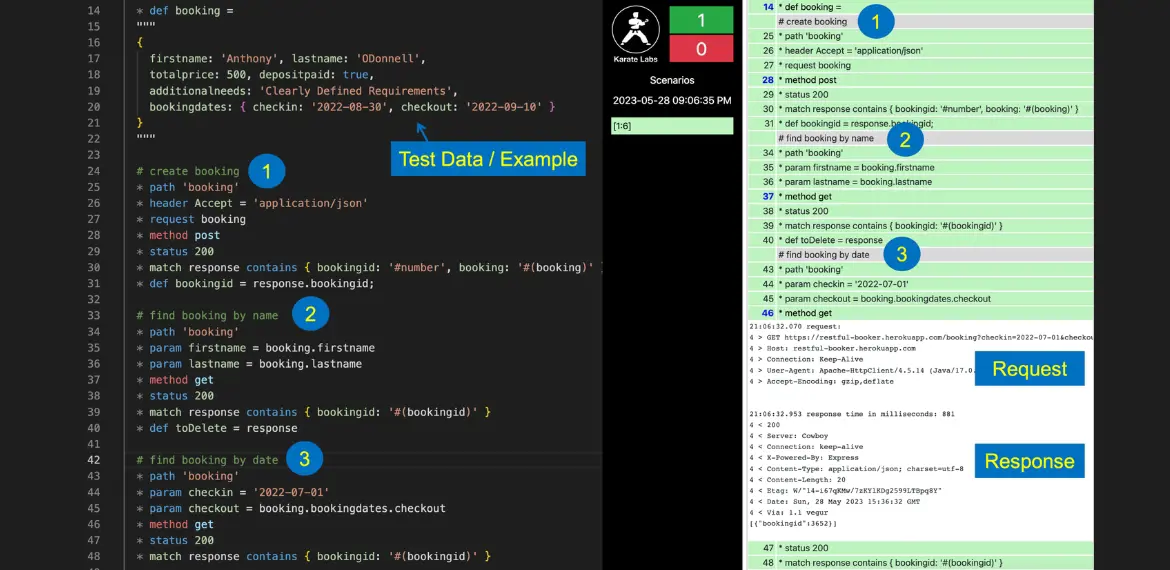Becoming A UI Testing Expert: Mastering Best Practices And Tools

Are you tired of dealing with frustrating bugs and glitches in your user interface, which can seriously damage your application's reputation? Perhaps you find it challenging to keep up with the ever-evolving landscape of UI testing, feeling overwhelmed by the multitude of tools and practices available. Don't worry; there is a way to achieve UI testing mastery that will lead to seamless user experiences and error-free interfaces.
In this blog, we will understand the fundamentals of UI testing, explore the best practices, and touch on some advanced techniques to help you become a proficient UI testing expert.
Fundamentals of UI Testing
UI testing ensures that an application's visual elements adhere to the intended design and that user interactions are seamless and without errors. It has many aspects, including layout, typography, color schemes, responsiveness, and navigation. Thorough UI testing enables developers and testers to detect and address potential issues that may impede the overall user experience.
The primary objectives of UI testing are to ensure consistency in design across different screens, enhance usability, and validate the application's visual appeal. It aims to guarantee that users can intuitively interact with the software without encountering any inconvenience.
UI automation testing has challenges, including dealing with multiple screen sizes and resolutions, handling dynamic content, and accommodating various devices and operating systems. A common misconception is assuming that UI testing is solely about aesthetics, neglecting the importance of functionality testing and user experience evaluation.
Best Practices for UI Testing
UI testing is a critical aspect of the software development process, ensuring that the user interface of an application meets the expected standards and provides an optimal user experience. Following best practices that streamline the testing process and deliver reliable results to achieve comprehensive and effective UI testing is essential. Here are some of the best practices for UI testing:
Test Planning and Strategy:
Effective UI testing begins with thorough test planning and strategy. Take the time to define the scope of your testing, outlining what aspects of the UI you will focus on. Consider the target audience and identify the platforms and devices they are most likely to use. Create a clear roadmap for your testing process, determining the testing objectives and the specific areas you'll evaluate.
- Setting Clear Goals and Objectives:
Develop a well-defined testing plan, considering application requirements, user expectations, and business goals. Choose appropriate testing methodologies, coverage, and risk assessment for an efficient process.
- Identifying Target Platforms and Devices:
Establish clear and achievable objectives for UI testing, prioritizing critical defects, consistent user experience, and feature validation. Define key performance indicators (KPIs) to measure testing success.
- Creating Comprehensive Test Cases and Scenarios:
Prioritize testing on relevant platforms and devices the target audience uses, combining real devices with emulators and simulators for broader coverage.
Test Design and Implementation
A well-designed testing approach is essential for efficient UI testing. Consider factors such as test data preparation, test environment setup, and test procedure design. Proper planning and implementation lead to accurate and reliable test results.
- Understanding Test Coverage and Prioritization:
Achieving 100% test coverage may not be feasible, so prioritize testing efforts based on critical UI elements and frequently used features. It is important to understand the risk associated with each UI element and prioritize them accordingly. Focus on high-priority areas, and testers can maximize the impact of their testing efforts.
- Writing Effective and Maintainable Test Scripts:
When creating test scripts, ensure they are easy to read and maintain. Use clear names for your test cases and follow a consistent structure so other testers can work together smoothly. Also, keep your test scripts organized in a well-structured repository, making it simple to find and update them when needed.
- Incorporating Test Automation Techniques:
Automating UI testing can make it much faster and more efficient. Look for tests you do repeatedly, and use UI automation tools to do them automatically. This will save time and make sure you test everything properly.
Test Execution and Reporting:
Test execution and reporting are crucial aspects of software testing automation that contribute to delivering high-quality applications.
- Executing tests across multiple environments:
Executing tests across multiple environments involves validating the application's performance and functionality on various platforms, browsers, and network setups. Test automation tools and cloud-based services streamline this process, ensuring broader test coverage and efficient testing.
- Tracking and documenting test results:
Using test management tools to track and document test results is important. It helps testers keep clear records of their tests, what happened in those tests, and any problems they found. This documentation is useful for future testing and makes it easier for the whole team to work together.
- Analyzing and communicating test findings:
It is crucial to analyze and share test findings to know how good the application is. Test reports with clear and organized information help stakeholders make smart decisions and fix important issues before releasing the app.
Advanced Techniques for UI Testing
As UI testing keeps improving, testing experts need to try advanced techniques to make their testing more effective and efficient. These advanced approaches go beyond the basics of UI testing and focus on specialized areas that can greatly improve the quality of applications. Let's check out four advanced techniques UI testing experts can use to bring their testing process to the next level.
Test Automation and Scripting:
Test automation expedites the testing process using specialized UI automation tools that automatically execute pre-scripted tests. This approach minimizes manual effort, accelerates testing cycles, and enhances the accuracy of the results. Choosing the appropriate UI testing framework and scripting language is crucial to ensure successful automation.
Moreover, the design of automated test scripts plays a vital role in their longevity and effectiveness. It is imperative to imbue these scripts with robustness and maintainability. Regularly updating and enhancing the scripts to accommodate UI changes and application updates is essential. Additionally, prioritizing reusable code avoids duplication and simplifies script maintenance, contributing to an efficient and effective UI automation framework in the long term.
Cross-Browser and Cross-Device Testing:
Testing websites on different browsers is important to ensure they look and work the same way for all users. But it can be tricky because each browser works differently. To make this process easier, having a good plan and using helpful tools or cloud services is essential.
Testing websites on different devices is also crucial to ensure they work well for everyone. Testers can use emulators, simulators, and real devices to cover various screen sizes and resolutions. This way, they can find and fix any issues before users encounter them.
Accessibility Testing:
Accessibility testing aims to ensure applications are usable by individuals with disabilities. Familiarize yourself with Web Content Accessibility Guidelines(WCAG), a guideline for creating accessible web content. Adhering to these guidelines enhances the application's inclusivity and user experience.
UI testing tools can assist in identifying potential accessibility issues. Conduct manual assessments to validate the user experience for users with disabilities.
Performance and Load Testing:
Performance testing assesses how well the application performs under different conditions. Define performance metrics and set realistic performance goals to evaluate the application's responsiveness.
Use performance testing tools to simulate various user scenarios and analyze the application's behavior under load. Test performance under different traffic loads to optimize performance.
Continuous Improvement as a UI Testing Expert
Continuous improvement is essential for becoming a successful UI testing expert. It means always improving your work and keeping up with the latest trends and technology. Here are some simple strategies to help you improve your UI testing skills:
- Staying Updated with Industry Trends and Best Practices:
Technology changes quickly, and new ways of testing websites and apps come up often. Read articles, blogs, and forums about UI testing to stay on top. Follow experts on social media to learn about the latest advancements. Use new tools and methods to make your testing faster and better.
- Networking and Collaborating with Other UI Testing Professionals:
Talk to others who do UI testing like you. Join online groups or attend conferences and workshops where you can meet them. By sharing your experiences and learning from others, you can find better ways to solve problems and improve your skills.
- Building a Portfolio and Showcasing Expertise:
Record and show your successful testing projects to others. A portfolio of your work will help you get better opportunities in the future. Use real examples to demonstrate your problem-solving abilities and attention to detail.
- Seeking Continuous Learning and Professional Development Opportunities:
UI testing is always changing, so there's always something new to learn. Take training courses, attend workshops, and get certifications to improve your skills. Stay updated with the latest testing tools and standards to stay valuable in your field.
Conclusion
With vast knowledge about UI testing and automation tools, your software development initiatives might be improved to a new level of excellence. You may guarantee a flawless user experience and wave goodbye to those annoying problems that impede the success of your application by mastering best practices and utilizing the appropriate UI automation testing tools and UI automation testing frameworks.
At Karate Labs, we know how important UI testing is in producing top-notch products. You have access to our state-of-the-art resources, enabling you to take control of your UI testing process fully. With the help of our extensive selection of testing solutions, you can confidently meet every problem you face and establish yourself as a genuine expert in your field.
So, why wait? With Karate Labs by your side, you can begin your road to UI testing expertise right away. Let's develop exceptional user experiences that distinguish your applications from the competition. Take advantage of our UI testing knowledge to maximize your app's potential.
Sick and tired of UI bugs? Choose Karate to manage your testing procedure and achieve excellence.






